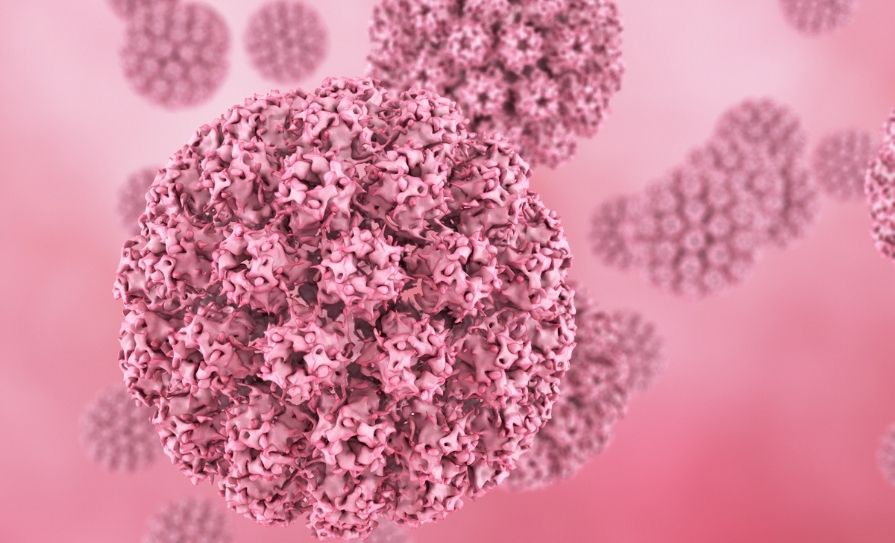Rare diseases in Ireland — what’s happening?
In 2014, the Department of Health finally published the long-awaited first National Rare Disease Plan for Ireland 2014-2018. The vision of the plan was that “people with rare diseases receive timely access to the best possible evidence-based, patient-centred and family-centred screening (as appropriate), diagnosis, treatment and care through all stages of their lives, and the needs and experiences of people with rare diseases are recognised, understood and addressed within all aspects of the Irish health system including policy, services and research/information systems”.
The plan provided a roadmap for the diagnosis, treatment, research and recording (establishment of centres of expertise, a national registry, etc) of rare diseases in Ireland, and while it was widely welcomed, its implementation has been much slower and less financially supported than hoped.
The key recommendations of the Plan included the further and formal development of the HSE National Clinical Care Programme for Rare Diseases and the establishment of a National Office for Rare Diseases.
The National Rare Diseases Office, the recognised national co-ordination ‘hub’ for rare diseases expertise, was established in 2015 and is staffed by healthcare professionals who have significant experience working with people affected by rare diseases. It provides current, reliable information about genetic and rare diseases to patients, families and health and research professionals, and manages the Irish section of Orphanet, the European portal on rare diseases information and orphan drugs.
The Office is also responsible for mapping the location and availability of clinical expertise and centres of expertise in Ireland. Over 75 centres have been mapped and listed on Orphanet to date. The Office provides information about virtual cross-border consultations and centres of expertise in neighbouring EU Member States, and has developed a series of educational videos for GPs and members of the public, which are available on its website www.rarediseases.ie.
The
National Rare Diseases Office is based in the Mater Misericordiae University
Hospital, Eccles St, Dublin 7 (to move to new National Children’s Hospital once
completed). Email: rare.diseases@mater.ie.
Rare Diseases Information line: 01 854 5065 Mon-Thurs inclusive 9.30am -1.30pm.
Prof Eileen Treacy is the Clinical Lead for the National Clinical Programme for Rare Diseases, and since its establishment in 2013 as a joint initiative between the HSE and RCPI, it has produced a number of useful documents about the management of rare diseases in Ireland, including the recently-published national Model of Care for Rare Diseases.
The Programme organised a workshop on clinical research in rare diseases in Ireland in 2018 with several international speakers, where it was noted that around two-thirds of HRB-funded projects in rare disease research were for applied biomedical research, while the remaining one-third were for clinical research, with very few projects in health services and population health.
It was noted that Ireland’s weaknesses in rare disease research include the lack of an overall strategic approach, the lack of patient registries, and the lack of protected time for research among rare disease clinicians in the HSE. The potential challenges of GDPR for patient registries and consent were noted, as was the lack of infrastructure/’scaffolding’ for rare diseases in Ireland, delays and lack of collaboration of ethics committees, the need for patient involvement, (patients as collaborators), and the need to focus more research on day-to-day quality of life of patients, as well as diagnosing and developing therapies for diseases.
Medicines access
Marking World Rare Disease Day earlier this year (28 February), data released by the Irish Pharmaceutical Healthcare Association (IPHA), the representative body for the research-based pharmaceutical industry, showed Ireland lags other Western European countries on speed of access to orphan medicines.
According to the figures, at the end of 2018, just 29 per cent of all available orphan medicines licensed by the European Medicines Agency for use in patients in 27 European countries were available to patients in Ireland. Ireland ranked in the bottom half of the list of European countries, and behind all other Western European Union countries, including Denmark, Spain, Sweden, Italy and Austria. The UK and Germany performed best, according to the figures, scoring 92-to-96 per cent for availability of orphan medicines, respectively.
Rare Diseases Ireland also noted that current clinical genetics staffing levels in Ireland are amongst the worst in Europe, with Northern Ireland having four times the number of genetic consultants than the Republic per head of population.
Waiting lists for genetic consultations are growing year-on-year, with a 20 per cent increase in the numbers waiting between December 2017 and December 2018.
The publication of a second national rare diseases plan is still awaited, with many of the recommendations from the first plan only partially or not at all implemented.
Rare diseases facts
A rare disease is defined as ‘rare’ when it affects fewer than one-in-2,000 people. Rare diseases are characterised by a wide diversity of symptoms and signs that vary not only from disease-to-disease, but also from patient-to-patient with the same disease.
It is estimated that rare diseases affect the lives of around 30 million people across the European Union (EU), with approximately 300,000 people in Ireland developing a rare disease at some point in their lives. Relatively common symptoms can hide underlying rare diseases, leaving many affected individuals as either undiagnosed or misdiagnosed.
There are more than 6,000 known rare diseases. Conditions such as cystic fibrosis, haemophilia and PKU are familiar to many. While there are many other rare and ultra-rare conditions, the bulk, however, of the presenting conditions are accounted for by about 350 conditions.
About 80 per cent of rare diseases have identified genetic origins, whilst others are the result of bacterial or viral infections, allergies and environmental causes, or are degenerative and proliferative.
Approximately 5 per cent of rare diseases have treatments, and often the best and only treatment option is to access a clinical trial. There is no cure for the majority of rare diseases.
Source: Rare Diseases Ireland and HSE
Trinity College Dublin first in Ireland to study CDKL5 deficiency disorder, a rare brain disorder in children
CDKL5 Deficiency Disorder (CDD) is a rare brain developmental deficiency disorder caused by a mutation in the gene CDKL5 (cyclin-dependent kinase-like 5), which is located on the X chromosome.
Most children affected by CDKL5 suffer from seizures that begin in the first few months of life and experience severe developmental delay affecting neurological functions such as motor control, speech, and cognitive ability. Most are unable to walk, talk or feed themselves and many are confined to wheelchairs and are fully dependent on family for support. Other symptoms of CDD include scoliosis, visual impairment, sensory issues and various gastrointestinal difficulties.
Most described CDKL5 patients are females (>80%), whereas boys with CDKL5 deficiency tend to show more severe symptoms.
Currently, no therapies exist for CDD and only symptomatic pharmacological treatments are available. The seizures associated with CDKL5 are largely resistant to control with current antiepileptic drugs, however.
While approximately 1,500 patients have been diagnosed with CDKL5 deficiency globally, the prevalence is likely higher due to mis- and undiagnosed cases. At present, there are six patients in the republic of Ireland and one patient in the North living with CDD.
CDD was only recently identified and Trinity College Dublin is the first institution in Ireland launching a research project on the disease.
Through their research, Principal Investigator Dr Max Bianchi from the Trinity College Institute of Neuroscience and his team hope to provide an early-life diagnosis of the disease in order to provide immediate treatment aimed to correct the neurodevelopmental alteration. Early identification of CDD accompanied by early therapeutic intervention will support patients and families living with the disease. The research may also lead to the discovery of innovative disease-modifying therapeutic interventions.
This disorder is caused by mutations in the CDKL5 gene which reduce or eliminate expression or function of the CDKL5 protein, an enzyme that is important for normal brain function.
The CDKL5 protein acts as a kinase; an enzyme that changes the activity of other proteins by adding oxygen and phosphate atoms (a phosphate group) at specific positions. Researchers have not yet fully determined which proteins are targeted by the CDKL5 protein.
The current Trinity study focuses on microtubules, which play a vital role in the development of brain cells and supporting the formation, maintenance and remodelling of synapses, which brain cells use to communicate. Thus, dysfunction in microtubule dynamics leads to altered brain development and loss of synapses.
Previous studies at Trinity showed for the first time that alterations in brain microtubules are detectable in plasma of patients affected by neurodegenerative disorders. More recently, and in collaboration with the University of Insubria (Italy), academics have observed in a preliminary study that behavioural alterations in a CDD animal model were accompanied by plasma changes of brain microtubules as well. Importantly, those behavioural and microtubular changes were rescued by a pharmacological treatment with a specific microtubule modulator. Thus, the main objective of the study is to rapidly translate the data obtained in animals into patients by measuring brain microtubules in plasma of CDD patients sampled from Irish, Italian and US diseased cohorts.
In July, Trinity hosted the first CDKL5-Ireland: Family Awareness Day at the Science Gallery to raise awareness of CDKL5. CDKL5 Ireland is an association of families affected by CDKL5 who are looking for support for their family members. The event presented the current research at Trinity into the understanding of how CDD develops as a disease, as well as its clinical aspects.
Speaking about the importance of the event, Principal Investigator Dr Max Bianchi from the Trinity College Institute of Neuroscience said: “CDD is a very severe disease in terms of symptomatology and the burden on the families is extremely important.”
“… as a scientist working in the field, since understanding the main evident and disturbing symptoms affecting the patients can lead me towards new hypotheses on the affected brain circuits and neuronal damages that happen with this disease. Interacting with patients and families also has an important motivational function for myself and my team, since it allows us to understand the ‘real world’ and to focus on our main mission as researchers, which is to rapidly advance knowledge and treatments for such devastating disorders.”













Leave a Reply
You must be logged in to post a comment.